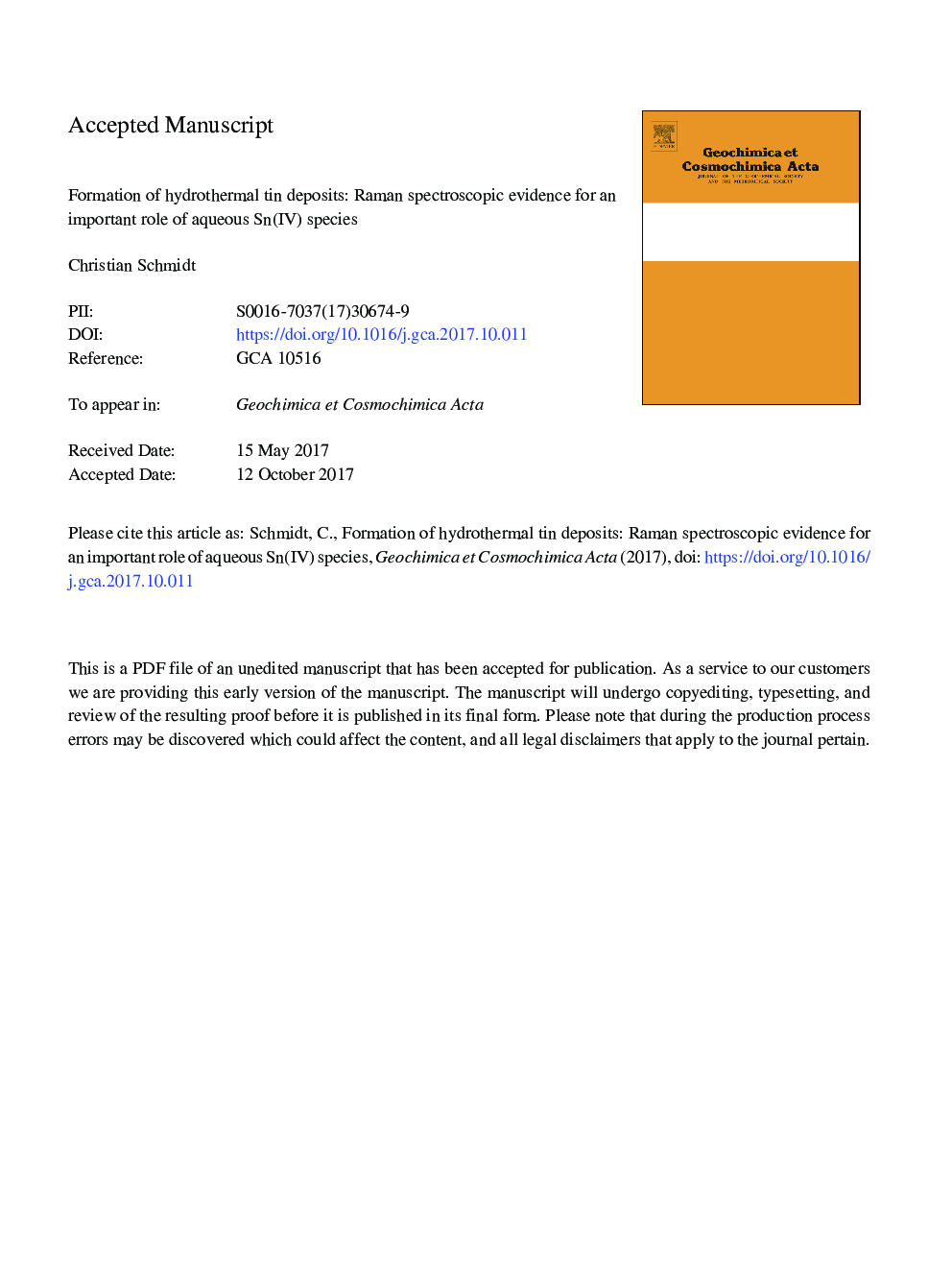| کد مقاله | کد نشریه | سال انتشار | مقاله انگلیسی | نسخه تمام متن |
|---|---|---|---|---|
| 8911039 | 1637937 | 2018 | 44 صفحه PDF | دانلود رایگان |
عنوان انگلیسی مقاله ISI
Formation of hydrothermal tin deposits: Raman spectroscopic evidence for an important role of aqueous Sn(IV) species
دانلود مقاله + سفارش ترجمه
دانلود مقاله ISI انگلیسی
رایگان برای ایرانیان
کلمات کلیدی
موضوعات مرتبط
مهندسی و علوم پایه
علوم زمین و سیارات
ژئوشیمی و پترولوژی
پیش نمایش صفحه اول مقاله

چکیده انگلیسی
The speciation of tin and the solubility of cassiterite in H2Oâ¯+â¯HCl were determined at temperatures to 600â¯Â°C using in situ Raman spectroscopy. In addition, information on the fluid-melt partition of Sn was obtained at 700â¯Â°C and indicated a preference of the fluid only at HCl concentrations that are much higher than in fluids exsolved from natural felsic melts. Dissolution of cassiterite generally resulted in formation of Sn(IV) species unless reduced conditions were generated by hydrogen permeation or carbohydrates in the starting material. The prevalent aqueous Sn(IV) species was [SnCl4(H2O)2]0, with additional [SnCl3(H2O)3]+ and [SnCl5(H2O)]â. The only detectable Sn(II) species was very likely [Sn(II)Cl3]â. Cassiterite solubility increased with HCl concentration and was generally high in H2O+HCl fluids, with no strong dependencies on temperature, pressure, or the oxidation state of tin in the fluid. The Sn(IV) concentrations at 500 and 600â¯Â°C determined from the integrated ν1[Sn(IV)Cl] band intensity are in good agreement with literature data on the cassiterite solubility in H2Oâ¯+â¯HCl at oxygen fugacities along the hematite-magnetite buffer. The combined results from previous experimental studies and this study demonstrate that HCl molality is a crucial parameter for hydrothermal mobilization and transport of tin and for cassiterite precipitation, and that pH, pressure and temperature are less important. Current models on hydrothermal tin deposit formation need to be augmented to include Sn(IV)Cl complexes as significant tin-transporting species. Irrespective of the oxidation state of tin in the fluid, cassiterite precipitates due to reaction of the hydrothermal fluid with the wall rock (greisen or skarn formation), dilution (mixing with meteoric water) or a decrease in the HCl activity in the aqueous liquid by boiling. A redox reaction is only required for tin transported as Sn(II) to be converted to Sn(IV).
ناشر
Database: Elsevier - ScienceDirect (ساینس دایرکت)
Journal: Geochimica et Cosmochimica Acta - Volume 220, 1 January 2018, Pages 499-511
Journal: Geochimica et Cosmochimica Acta - Volume 220, 1 January 2018, Pages 499-511
نویسندگان
Christian Schmidt,